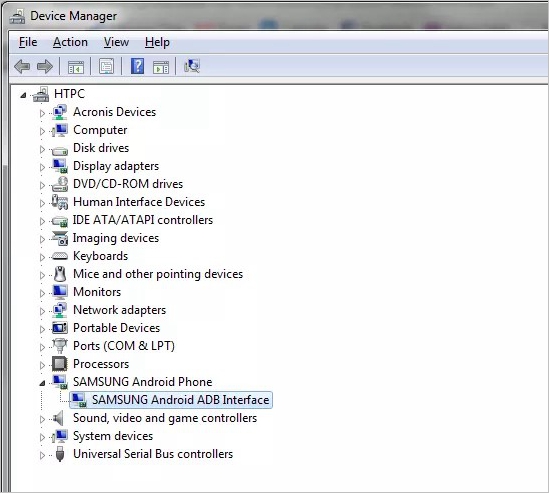Samsung Adb Drivers Windows 10
Problem: Install ADB drivers (google_usb_drivers) on a Windows 10 client in order to enable debugging for my OnePlus One (OPO). What I have tried: After some Googling I found several guides telling me to add the devices hardware id to googles driver 'android_winusb.inf' under [Google.NTx86] and [Google.NTamd64].;OnePlus One%SingleAdbInterface% = USB_Install, USB VID_05C6&PID_6765%CompositeAdbInterface% = USB_Install, USB VID_05C6&PID_6765&MI_01 After manually selecting this file as the driver using Device Manager, I get this error message: The hash for the file is not present in the specified catalog(.) Googling this error, I found many references to similar problems with Windows 8.1. They all suggested to (scarily I might add) turn off signature checks on drivers using the command: bcdedit.exe -set loadoptions DDISABLE_INTEGRITY_CHECKS This however, seems to have no effect - I get the same error as before. Have this feature been disabled or changed since Windows 8.1 maybe? Question: Does anyone know how to get ADB up and running on a Windows 10 machine? If so which steps did you take?
Am I completely off with what I've tried so far? I couldn't update the ADB driver on Windows 10.
When I tried installing the generic Google ADB driver by clicking on 'Browse my computer for driver software' and choosing the driver folder, Windows ignored the drivers, saying there were no drivers found. I finally found the solution in this article,. The missing step is to continue guiding Windows after clicking on 'Browse my computer for driver software'. When selecting the folder with the driver, click on the 'Let me pick from a list of device drivers on my computer'. Select 'Show all devices', then 'Have Disk'.
Hp Laserjet M2727nf Mfp Driver Windows 10. This defaults to drive A: --- navigate to the folder with the extracted USB drivers, probably named usb_driver. You'll then be able to choose 'Android ADB Interface' and install the driver. This allowed me to connect OnePlus One to Windows 10 for debugging.
I could navigate in Chrome to chrome://inspect/#devices and see my device. I had similar problems, adb devices didn't list any devices once I'd upgraded to Windows 10.
I happened to have an Intel-powered Android phone connected over USB. I ended up removing the Intel-specific Android Driver (downloaded yesterday, version 1.9 which doesn't explicitly support Windows 10) and then used the universal Android USB driver following the steps described in the following article (using Device Manager and removing the previous driver). For good measure I disconnected and reconnected the USB cable after removing the previous driver and before selecting the replacement driver.
My computer has several possible matches in Device Manager when I selected choose the driver manually. I checked each one until I found what seemed to be the relevant one i.e. The Universal Driver, then from the list I picked the Android USB Driver. As you have a different device, you may need to pick a different device driver from the list.

We found at least 10 Websites Listing below when search with samsung adb driver windows 10 on Search Engine.
Google's adb driver works fine with any Android phone. It's Microsoft policy to forbid class drivers so each vendor is required to provide same driver with different hardware ID and to pay money for Windows Logo® program and signing process. As it is in Linux )) To temporary disable integrity/signing enforcement, run as Administrator: bcdedit /set testsigning off reboot, install driver and then: bcdedit /set testsigning on and make final reboot (can be done later).
You can follow my blog post on subject.